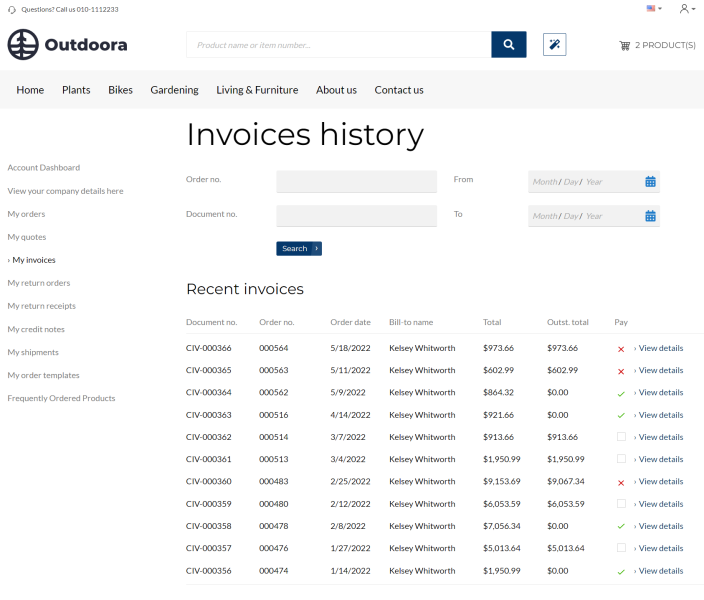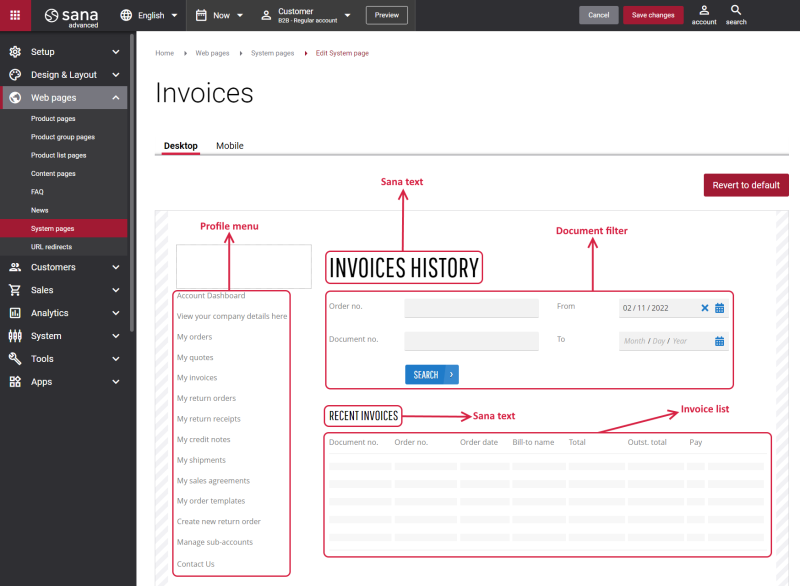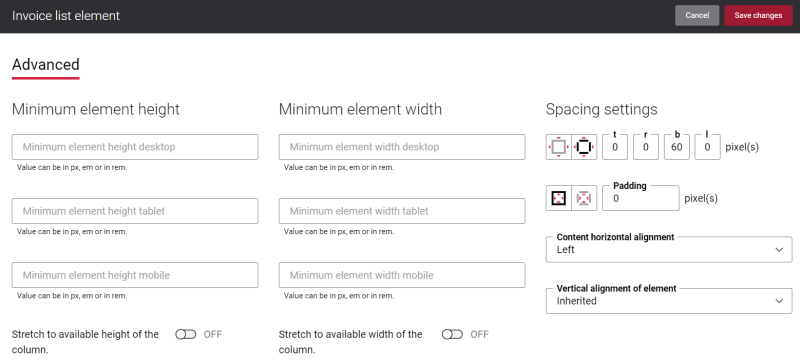Invoices
Sana Commerce Cloud allows business customers to pay outstanding invoices online using a credit or debit card through a payment service provider directly from a webstore. Business customers can pay multiple outstanding invoices at the same time. Online payments of the open invoices from a Sana webstore are seamlessly integrated with the sales order processing and cash management modules of the ERP system.
Invoices history is a must-have on any e-commerce site because it is a convenient and easy way for a customer to keep track of all invoices. Customers can check their invoices history from the My account page in the Sana webstore.
Invoices history contains up-to-date information about customer invoices, like invoice number, order number and date, bill-to name, total and outstanding total, invoice status, etc. Also, there is a link in the invoice line using which a customer can get more detailed information about an invoice and pay an invoice.
A customer can also search for a specific invoice by its number or by order number for which an invoice was created, and a customer can filter invoices by date.
For more information, see Order History.
With possibilities Sana provides, you can manage the content of the Invoices history page the way you need. You can make the Invoices history page impressive and at the same time easy to use and thus improve your customers shopping experience.
Edit Content of the Invoices Page
You can style the Invoices history page using the Invoices system page in Sana Admin.
The Invoices page is a system page that exists in Sana by default, but you can also change the content and styles of the Invoices page if you want to modify its appearance.
To edit the content of the Invoices page, in Sana Admin click: Web pages > System pages. On the System pages page, you can see all available system pages and you can edit the Invoices system page.
The Desktop and Mobile tabs hold the content elements of the Invoices page that are shown on the desktop and mobile devices. Thus, the Invoices page can be styled differently for the desktop and mobile devices.
There are several default content elements on the Invoices page which you can edit. The default content elements on the Invoices page are:
-
Profile menu
-
Sana text
-
Document filter
-
Invoice list
Also, you can add and remove various content elements on the Invoices page as well as use the content management system of Sana with the page layouts, row and column settings to create high quality and impressive design for the Invoices page.
Using the Revert to default button you can revert any changes you have made to the page and start from scratch.
Content Elements on the Invoices Page
Below you can see the description of all standard content elements that are shown on the Invoices page.
Profile Menu
The Profile menu content element is used to show the account menu on the Invoices history page.
For more information, see Profile Menu.
Document Filter
The Document filter content element is used to show search and filter on the Invoices history page. A customer can search for a specific invoice by its number or by order number for which an invoice was created, and you can filter invoices by date on the Invoices history page in the Sana webstore.
Invoice List
The Invoice list content element is used to show the list of customer invoices on the Invoices history page.
Customers can check the information about their invoices, like invoice number, order number, and date for which an invoice was created, bill-to name, total and outstanding total, invoice status, etc. Also, there is a link in the invoice line using which customers can get more detailed information about an invoice and pay an invoice. This link is not shown in the Invoice list content element in Sana Admin, but it is available on the Invoices history page in the Sana webstore.
Content Element Advanced Settings
On the Advanced tab of each Invoices page content element you can configure height, width and spacing settings. These settings are the same for all content elements.
For more information about advanced settings, see Content Elements.
Change the Default Texts of the Invoices Page
You can easily change the standard texts of the Invoices page in the English language or any other installed webstore language.
Standard texts on the Invoices page can be separate Sana text content elements as well as parts of other content elements.
-
If the default text on a page is a Sana text content element, you can change this text either directly on the page using the inline editing, or by opening the settings of the Sana text content element and changing it there.
-
If the text on a page is a part of another content element, you can change this text either in the Page elements & messages or In-site editor.


